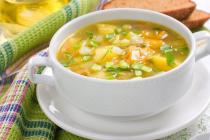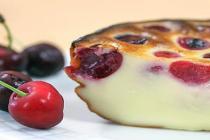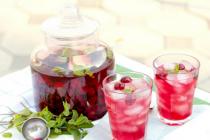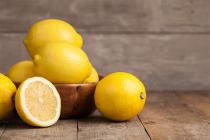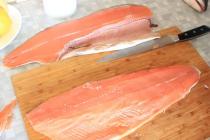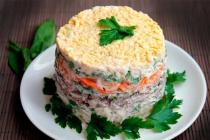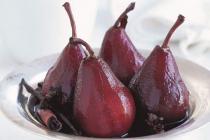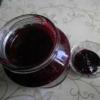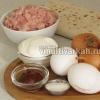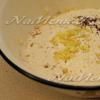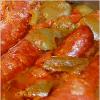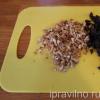In this article I will tell you how to properly dilute alcohol with water to get high quality vodka. We will take a closer look at the proportions and mixing technology of the ingredients. You can easily perform all the necessary actions in your kitchen.
Getting vodka by diluting alcohol is called "cold" production. This method is often used even in distilleries, thanks to which a high quality end product can be obtained. The main thing is to fully comply with the mixing technology.
1. Preparation of ingredients. Let's start with alcohol. Depending on the degree of purification, ethyl alcohol is:
- first grade (96%);
- highest purification (96.2%);
- extra (96.5%);
- luxury (96.3%);
- anhydrous;
- medical.
You can use any of these alcohols, the highest quality is the Lux class, the least suitable is the highest purity. Sometimes the title can be deceiving 🙂.
To properly dilute alcohol, we need specially prepared (corrected) water. It should be transparent and colorless. For home production vodka is suitable for distilled water or ordinary, but well-purified by filters. Untreated tap water is the worst option.
To improve taste, the following can also be used:
- acetic and lemon acid;
- sugar;
- glucose;
- milk;
- aromatic additives.
Adding these ingredients is optional, but they help soften the unpleasant aftertaste of alcohol and make homemade vodka tastier.
2. Proportions of alcohol dilution. It has been experimentally established that the ideal ratio is 2: 3 (as Mendeleev himself believed). Two parts of 96% alcohol and three parts of water are mixed. But it is not the volumes of liquids that are correctly mixed, but their weight ratios, this allows you to more accurately calculate the strength of the finished vodka.
If you want to get a drink with a predetermined strength, for example, 40, 55 or 60 degrees, the Fertman table will help with this.

 Fertman table
Fertman table Attention! When diluting, pour alcohol into the water, but not vice versa.

Counting in progress ...
Enter the initial data on the left
For getting
after dilution,
need to add water
3. Cleaning. To improve the quality of the prepared vodka, you should throw a few tablets of activated carbon into it and leave it for a couple of hours at a temperature of 22 ° C. Then strain the solution through a thick cloth.
4. Adding other ingredients. Honey, sugar, glucose, orange or lemon juices help soften the taste of the prepared vodka. The proportions depend on the taste, but the main thing is not to overdo it, otherwise you will get a tincture instead of vodka.
 Lemon juice softens the taste
Lemon juice softens the taste 5. Defending. The diluted alcohol will be usable after 7 days. During this time, all chemical reactions will stop, and the finished vodka will delight you with its taste. Defend vodka from alcohol in a dark room with a temperature above 4 ° C. After aging, the drink can be bottled, the production process is complete.
Stas provided us with his own version of sorting - mixing alcohol with water, especially for Alkofan.
Ethyl alcohol is used in medicine and the food industry. On its basis are made medications and alcoholic drinks. Many people are interested in whether it is possible to drink medical grade alcohol? This issue should be considered in more detail.
In the pharmaceutical and food industries, ethanol of varying quality and purity is used. The following types of ethyl alcohol can be distinguished:
- Medical alcohol. In medicine, a solution of ethanol with a strength of 40 to 95% is used. It is not as highly purified as food alcohol and is intended for external use.
- Alcohol class "Alpha" and "Lux". These are the highest quality edible ethanol that is used in the production of vodka.
- Alcohol "Basis" and "Extra". This product is of lower quality and is used for making vodka of inexpensive varieties.
 which is for external use? First of all, you need to pay attention to its composition and strength. If only ethanol and water are indicated on the label among the ingredients, then you can drink such alcohol, but it is undesirable, since it is not intended for food use.
which is for external use? First of all, you need to pay attention to its composition and strength. If only ethanol and water are indicated on the label among the ingredients, then you can drink such alcohol, but it is undesirable, since it is not intended for food use.
What happens if you drink 95% ethyl alcohol? Do not use such a product undiluted, as this can lead to burns of the throat and mucous membranes. internal organs, not to mention severe intoxication. It must be diluted with water about half., then its strength will be approximately equal to the strength of vodka. You can dilute ethanol with juices, fruit drinks or compote. It is undesirable to use carbonated water or alcoholic drinks for dilution, as this can lead to rapid and severe intoxication.
Can I drink ethyl alcohol 70%? Or must it be diluted with water? We can say that it is undesirable to drink it undiluted. Drinks with a strength of more than 50% can harm the body. It must also be remembered that even pure medical alcohol irritates the mucous membrane to a greater extent than food alcohol. And his negative impact on the liver much stronger than that of a product intended for drinking.
Harm to health
The doses of medical ethanol taken internally are also very important. An alcohol concentration of more than 5 g / L of blood can be fatal, and an amount of alcohol in a concentration of more than 3 g / L causes severe poisoning. It must be remembered that due to the lower quality of purification, medical ethanol causes poisoning faster than food grade. Therefore, it should be drunk in lower doses. With intoxication, the following symptoms are observed:

With such symptoms, you must immediately call an ambulance..
Diluted ethanol alcohol should be consumed in slow sips, avoiding overdose. Excessive amounts of ethanol destroy the neurons in the brain and liver. Overdosing on alcohol-based beverages leads to severe hangover.
Other types of alcohol-containing preparations
Pharmacies also sell other types of rubbing alcohol. They are intended for outdoor use. Many consumers are interested in whether it is possible to drink alcohol based on these drugs. The consequences depend on what substance is added to the ethanol. Most common the following types of medical alcohols:

To the question, what alcohol can you drink, the answer is unambiguous: you can take medical ethanol without additives. At the same time, only in moderate doses, occasionally and always in a diluted form. All other alcohol-containing products from the pharmacy are toxic.
The most dangerous alcohol substitute is methyl alcohol. It is this compound that can cause severe poisoning with blindness.
Methanol is practically indistinguishable from ethanol in terms of appearance, smell and taste. This is technical alcohol, which is used for the preparation of solvents, paints and varnishes. Ingestion of 10 ml of methanol can cause blindness, and 50 ml is fatal. Signs of methanol intoxication are as follows:
- flickering of black dots in front of the eyes;
- increased saliva production;
- impaired coordination of movements;
- vomiting;
- pressure surges.
Sometimes the symptoms of poisoning do not appear immediately, but as the poison accumulates in the body. A characteristic feature intoxication is a worsening of the condition a few days after drinking. If there are signs of poisoning methanol need to urgently call an ambulance. Before the arrival of doctors, the following measures must be taken:

Distinguish methyl alcohol from ethyl can be done using the following tests:
- If you ignite the liquid, then ethanol burns with a blue flame, and methanol - green.
- You can put raw potatoes in rubbing alcohol. Ethanol does not change the color of the vegetable. In methyl alcohol, the potatoes turn pink.
- Dip a hot copper wire into the liquid. If there is an unpleasant odor, it is methanol.
Often methanol poisoning occurs when drinking alcoholic beverages of dubious origin. To detect the presence of methyl alcohol in alcoholic beverages, the following tests must be carried out:
- Pour the drink into a container and toss in the baking soda. In methanol, soda dissolves completely, and a yellow precipitate is formed in ethanol.
- You can put potassium permanganate in the liquid. If bubbles form, the drink contains methanol.
 Almost all types of industrial alcohol are unfit for consumption, even if they are composed of ethanol. Usually, dyes or denaturing additives with an unpleasant odor and taste are added to such products, which are harmful to the body. Aviation ethanol may contain salts of heavy metals, such compounds lead to serious poisoning.
Almost all types of industrial alcohol are unfit for consumption, even if they are composed of ethanol. Usually, dyes or denaturing additives with an unpleasant odor and taste are added to such products, which are harmful to the body. Aviation ethanol may contain salts of heavy metals, such compounds lead to serious poisoning.
The safest are edible alcohols, which are highly purified and intended for drinking. It is possible to use medical ethanol only occasionally, in extreme cases, it should in no case become a habit.
The recipe and technology are very simple. In terms of quality, the finished product is no worse than factory counterparts, and even better with good raw materials. I will tell you how to make vodka from alcohol at home. You will learn how to properly dilute alcohol with water in the right proportions. You can also add flavors if desired.
If you or your relatives have access to quality ethyl alcohol, then I advise you to prepare vodka according to this recipe. Moreover, now in Russia there is no responsibility for home brewing and the production of vodka mixtures for their own needs (the main thing is not to sell). The whole process consists of four simple steps, which we will cover in detail.
1. Water preparation. Spring water is used in classic Russian vodka recipes. But it is not easy for residents of big cities to get it, so we will get by with ordinary bottled water, which can be bought in almost every store. The first thing to know is boiled and distilled water is not suitable for vodka, because during boiling and distillation, water loses some of the nutrients and poorly dissolves alcohol.
For home production of vodka, water containing minimal amount salts. If you buy it in a store, then carefully look at the label, which indicates the salt content. I also advise you to pay attention to the transparency and hardness, the softer and more transparent the water, the better.
2. Preparation of alcohol. Naturally, it should only be ethyl or medical. The difference between them is that medical alcohol is made from ethyl alcohol, it contains small impurities of water and other substances on molecular level... Both ethyl and medical alcohol are suitable for the production of vodka, in our case there is no significant difference between them.
Before starting the dilution, determine the strength of the alcohol, this is done using a hydrometer. The initial strength is needed so that later you know in what proportion to mix alcohol with water.
3. Preparation of other ingredients. In addition to water and alcohol, we need glucose. You can cook it yourself by dissolving 1 kg of sugar in 1 liter of water. Next, the mixture is put on low heat and boiled. During the boiling process, a white foam will appear, which needs to be removed. The syrup is considered ready, if the foam no longer appears, then it can be removed from the heat.
Depending on your taste preferences, you can also add honey, citric acid, orange and lemon juices to alcohol vodka.
4. Mixing. After all the ingredients are ready, proceed to mixing. First, we determine the amount of water. This is done using the special table below.
| After | Ethyl alcohol content before dilution with water | |||||||||
|---|---|---|---|---|---|---|---|---|---|---|
| 95 ° | 90 ° | 85 ° | 80 ° | 75 ° | 70 ° | 65 ° | 60 ° | 55 ° | 50 ° | |
| 90 ° | 6,4 | |||||||||
| 85 ° | 13,3 | 6,6 | ||||||||
| 80 ° | 20,9 | 13,8 | 6,8 | |||||||
| 75 ° | 29,5 | 21,8 | 14,5 | 7,2 | ||||||
| 70 ° | 39,1 | 31,0 | 23,1 | 15,4 | 7,6 | |||||
| 65 ° | 50,1 | 41,4 | 33,0 | 24,7 | 16,4 | 8,2 | ||||
| 60 ° | 67,9 | 53,7 | 44,5 | 35,4 | 26,5 | 17,6 | 8,8 | |||
| 55 ° | 78,0 | 67,8 | 57,9 | 48,1 | 38,3 | 28,6 | 19,0 | 9,5 | ||
| 50 ° | 96,0 | 84,7 | 73,9 | 63,0 | 52,4 | 41,7 | 31,3 | 20,5 | 10,4 | |
| 45 ° | 117,2 | 105,3 | 93,3 | 81,2 | 69,5 | 57,8 | 46,0 | 34,5 | 22,9 | 11,4 |
| 40 ° | 144,4 | 130,8 | 117,3 | 104,0 | 90,8 | 77,6 | 64,5 | 51,4 | 38,5 | 25,6 |
| 35 ° | 178,7 | 163,3 | 148,0 | 132,9 | 117,8 | 102,8 | 87,9 | 73,1 | 58,3 | 43,6 |
| 30 ° | 224,1 | 206,2 | 188,6 | 171,1 | 153,6 | 136,0 | 118,9 | 101,7 | 84,5 | 67,5 |
| 25 ° | 278,1 | 266,1 | 245,2 | 224,3 | 203,5 | 182,8 | 162,2 | 141,7 | 121,2 | 100,7 |
| 20 ° | 382,0 | 355,8 | 329,8 | 304,0 | 278,3 | 252,6 | 227,0 | 201,4 | 176,0 | 150,6 |
| 15 ° | 540,0 | 505,3 | 471,0 | 436,9 | 402,8 | 368,8 | 334,9 | 301,1 | 267,3 | 233,6 |
For example, if you want to get vodka with a strength of 40 degrees, then you need to mix 100 ml of 90-hundred-degree alcohol with 130.8 ml of water. This is how the correct proportion is calculated. In the example, it is 1 part alcohol to 1.3 parts water. You can make adjustments for the addition of other substances (glucose, juice), but these ingredients insignificantly affect the strength of the finished drink.
All the necessary calculations are automatically made by the calculator for the dilution of alcohol with water.

Counting in progress ...
Enter the initial data on the left
For getting
after dilution,
need to add water
It is the strength of 40 degrees that is considered optimal, since it contributes to the complete dissolution of the molecules of all substances that make up the composition. Remember that 500 ml of water and 500 ml of alcohol will not make one liter of vodka, since some of the liquid will be absorbed by chemical reactions.
Now let's go directly to mixing. First, the calculated amount of water is poured into the prepared container, then glucose (at least a little) and other ingredients (optional) are added to taste. When diluting, it should be remembered that it is correct to add alcohol to water, and not vice versa. Otherwise, the alcohol will turn white and become unsuitable for making homemade vodka.
After the right amount alcohol got into the container, the entire contents are thoroughly mixed. This helps the substances dissolve more quickly. If the container is tightly closed, then instead of stirring, the vodka can be shaken.
4. Purification filtration. 3-4 tablets of activated carbon are placed in the resulting solution and shaken well. Next, the vodka must be infused for 2 hours at room temperature, and then filtered through a dense cloth.

 Almost done!
Almost done! Alcohol vodka is almost ready. It remains only to pour it, filling the bottles to the very neck, and tightly close with corks. Alcohol will evaporate when exposed to air. I advise you to let the drink rest for another 1-2 days, then its taste will be optimal. The shelf life of vodka prepared according to this recipe depends on the amount of third-party additives. If they are not there, then vodka can be stored indefinitely.
Stanislav shared with us his method of "sorting" the dilution of alcohol with water.
It would seem that it could be easier than to make a drinkable liquid from alcohol. That is, dilute to 40 degrees recommended by the Ministry of Health.
Although there are individuals who can absorb alcohol in its pure form, but we are not one of them, so we will dilute. How to properly dilute alcohol with water to get a drink ready to drink?
First, we need:
- Alcohol or rubbing alcohol, with a strength of 96%. We take, of course, ethyl alcohol, which is suitable for ingestion. As you know, there is also methyl (technical) alcohol, which is a poison. He has completely different tasks and it is not necessary to take him. Even for nothing.
There are, of course, methods that allow you to distinguish ethyl alcohol from technical (methyl), but they all do not give a 100% guarantee, so the most reliable way is to buy (take) alcohol in a safe place. - Purified water, can be bottled, but better distilled. Tap water, as well as boiled water, is not suitable, since it is hard, that is, it has a lot of dissolved salts. This will affect the taste of our drink and, moreover, such water may become cloudy during the preparation of vodka.
- Measuring capacity
Preparation of pure vodka with a strength of 40 degrees without additives.
Take for example 500 ml 96% alcohol. For this amount you need 700 ml... water. If you have a different amount of alcohol, then we take less or more water, respectively, so that the proportion would be observed.
If you want to get vodka of a different strength, or if your alcohol is not standard 96%, then you need to use special calculators online or appropriate tables to calculate the required proportions.

Table of the ratio of alcohol and water in the preparation of vodka.
The amount of water is indicated for 100 parts of alcohol. For example, to prepare a 40-degree drink from 95% alcohol, you need to take 144.4 ml of water and 100 ml of alcohol.
First, pour water into a container in which we will dilute our magic solution. The water should not be warm. It is best if it is not just room temperature, but chilled.
Important: it is necessary to pour alcohol into water, and not vice versa... Otherwise, you risk getting a cloudy solution that bears little resemblance to real vodka.
Then mix or shake.
Pour into a storage container and close tightly.
Let it settle for a few days. (well, or at least a few hours).
All pure vodka without additives is ready. But to make drinking more pleasant and tasty, certain ingredients are used, which are added at the mixing stage.
Therefore, the second recipe:
Preparation of vodka, as in a store and even better with a strength of 40 degrees
In this case, we need:
- Alcohol and water, as in the previous case
- Glucose (available at the pharmacy)
- Honey, citric acid, lemon or orange juice - optional and of your choice
- Activated carbon, 10 tablets.
Again, we will proceed from the fact that we have available for this case. 500 ml 96% alcohol
The preparation procedure is as follows.
- Pour into a container 700 ml... water and add about 20 ml. glucose, honey, orange juice, as they say "to taste." And you can experiment with the amount of glucose.
- Mix everything thoroughly and then add alcohol. Do not forget that water and other ingredients must be cooled down to at least room temperature.
- Add activated carbon (it is better to crush the tablets into powder), mix and let stand from several hours to a day (the more, the better).
- After that, we filter through gauze with cotton wool or cotton wool inserted into the watering can. In any way, so that a clear, transparent liquid is at the exit.
- Pour into a storage container just below the neck and close tightly.
- Let it settle for a few days.
Everything! After that, you can use it in moderation and decency.
Alcohol is diluted with water and other ingredients to make vodka. Self-preparation of a drink practically does not differ from factory technologies. The advantage of this cooking procedure is that you control everything yourself. And therefore, you will be sure that you will prepare a normal product, with or without, according to your taste, various additives and without the risk of getting poisoned with fired vodka. How to properly dilute alcohol and will be discussed in the article.
Preparation of ingredients
Alcohol
The preparation of vodka from alcohol by dilution in water is called the "cold method" by the technologists. This operation is often used at distilleries. The technology is proven, proven, economical. Dilution results in a high quality food product with a well-known intoxicating effect.
In this process, the main thing is to follow the step-by-step order of mixing all the ingredients. But first you need to prepare them. We choose alcohol from the list below:
- 96.5% - extra;
- 96.3% - luxury;
- 96.2% - high purity;
- 96% - first grade;
- medical;
- anhydrous.
The best quality alcohol is a product labeled "Lux". And the worst option (for lack of a better one) is the highest purity alcohol. (Don't be surprised - it's true, one hundredth of a percent is very important!)
Water
After choosing the main raw material, it is necessary to prepare water, in which then it will be necessary to dilute the alcohol. This component can be filtered or distilled. Filtered can have different results, they depend on the hardness of the water and its mineral composition... And with "distillate" there are practically no options for failure (if it is really a distilled product). It is never necessary to use tap ("zhekovsky") water without purification - you will spoil both the final product and the valuable alcohol simply transfer.
There are recommendations to use spring water, clean bottled water, clear melt water. With these options, everything is very ambiguous. Spring water is often hard, purchased water from a supermarket also does not differ in the purity of its parameters, and we do not recommend melt water (with our ecology) at all. (The last tip will be especially relevant not only for residents of cities, but also for suburbs, small towns and villages located next to industrial giants within up to 100 km.)
Additives
How various additives are in industrial production use various acids and additives. Acetic and citric acid are the most popular. Acetic for its cheapness and sugary smell, and lemon for softening hard water (even filtered water can be hard). Sugar, aromatic essences are added to vodka, milk and honey are added in small quantities.
The use of these ingredients depends only on your taste preferences. Love "bitter", real and burning, "so that it warms up" - do not use additives. If you like a soft-to-go product, experiment by adding a little and come up with your perfect recipe.
Alcohol dilution proportions and preparation procedure
Long ago (more than 140 years ago) it was found that the optimal proportion for mixing vodka is 2 parts of alcohol and 3 parts of water. The unit of measurement is mass. That is, to get 1 kg of vodka, you need to take 0.4 kg of alcohol and 0.6 kg of water. Applying these weight fractions, you will get the classic "40 degrees" volume of a little less than 1 liter.
It is important to understand how to properly dilute the alcohol. The mixing procedure is simple: alcohol is poured into the water. Not otherwise. Control is carried out with a hydrometer (alcohol meter). Depending on the readings of the device, add a little alcohol. (At the same time, remember about water: it is no longer possible to pour it into the mixture.)
You can use scientific tools for dilution and control - special tables. For vodka of classical strength at 40 °, you need to take 100 ml of alcohol with a strength of 90 ° and pour into a volume of water equal to 130.8 ml.
For additives, when it comes to industrial production, they make mass (volumetric) corrections. For home cooking, in small quantities, you can ignore these amounts of additives.
Table "How to dilute alcohol with water". (The value in the cell is the amount of water in ml per 100 ml of ethyl alcohol)
| After | Alcohol content before dilution | |||||||||
| 95 ° | 90 ° | 85 ° | 80 ° | 75 ° | 70 ° | 65 ° | 60 ° | 55 ° | 50 ° | |
| 90 ° | 6,4 | |||||||||
| 85 ° | 13,3 | 6,6 | ||||||||
| 80 ° | 20,9 | 13,8 | 6,8 | |||||||
| 75 ° | 29,5 | 21,8 | 14,5 | 7,2 | ||||||
| 70 ° | 39,1 | 31,0 | 23,1 | 15,4 | 7,6 | |||||
| 65 ° | 50,1 | 41,4 | 33,0 | 24,7 | 16,4 | 8,2 | ||||
| 60 ° | 67,9 | 53,7 | 44,5 | 35,4 | 26,5 | 17,6 | 8,8 | |||
| 55 ° | 78,0 | 67,8 | 57,9 | 48,1 | 38,3 | 28,6 | 19,0 | 9,5 | ||
| 50 ° | 96,0 | 84,7 | 73,9 | 63,0 | 52,4 | 41,7 | 31,3 | 20,5 | 10,4 | |
| 45 ° | 117,2 | 105,3 | 93,3 | 81,2 | 69,5 | 57,8 | 46,0 | 34,5 | 22,9 | 11,4 |
| 40 ° | 144,4 | 130,8 | 117,3 | 104,0 | 90,8 | 77,6 | 64,5 | 51,4 | 38,5 | 25,6 |
| 35 ° | 178,7 | 163,3 | 148,0 | 132,9 | 117,8 | 102,8 | 87,9 | 73,1 | 58,3 | 43,6 |
| 30 ° | 224,1 | 206,2 | 188,6 | 171,1 | 153,6 | 136,0 | 118,9 | 101,7 | 84,5 | 67,5 |
| 25 ° | 278,1 | 266,1 | 245,2 | 224,3 | 203,5 | 182,8 | 162,2 | 141,7 | 121,2 | 100,7 |
| 20 ° | 382,0 | 355,8 | 329,8 | 304,0 | 278,3 | 252,6 | 227,0 | 201,4 | 176,0 | 150,6 |
| 15 ° | 540,0 | 505,3 | 471,0 | 436,9 | 402,8 | 368,8 | 334,9 | 301,1 | 267,3 | 233,6 |
Cleaning
After that, the finished product is defended and cleaned a little. Cleaning can be done through a cloth or paper filter. Also, after mixing, you can pour a little activated carbon into the mixture itself, and after aging, strain it.
To improve the quality of the finished vodka, several tablets of activated carbon are added to the product. After that, the product is kept warm for 2-4 hours in this state. The mixture is then filtered through a cloth.
Adding other ingredients
After you have successfully diluted the alcohol, the next step is the addition of additives. For softening add honey, glucose, citrus juices. If there is no experience, then add in small portions. For 1 liter, 30-40 ml of the ingredient is enough, no more. Acids are added even less - 5-10 ml per 1 liter of finished product.
Further, it is required to keep the entire composition in the dark and cold for about a week: the diluted alcohol reacts with all the components, the mixture gains the final taste. When the exposure is over, the finished vodka must be bottled. It is important to seal the bottles tightly: if this is not done, then part of the alcohol will evaporate, which will reduce the strength of the product.
At this stage, another surprise awaits you: there will be less finished vodka - some of the substance will react and form new compounds, due to which the final volume of vodka will decrease.
Note 1. A number of sources suggest that you first prepare pure vodka, without additives. Others suggest preparing the water first: pour in and stir all the additives.
Note 2. If the table is difficult to use, then there is another simple formula for diluting 96% alcohol: 1 liter of alcohol is required to be added to 1.4 liters of water to obtain a 40 ° drink.
Note 3. The temperature of the ingredients is important for making vodka. It is enough to heat them up to 20 ° С. If you do not do this, then you can suffer with adjusting the "degrees" in strength: the difference from the standard 20 degrees (temperature) can give differences in strength degrees from 1 or more for each unit of temperature.
Video instructions

